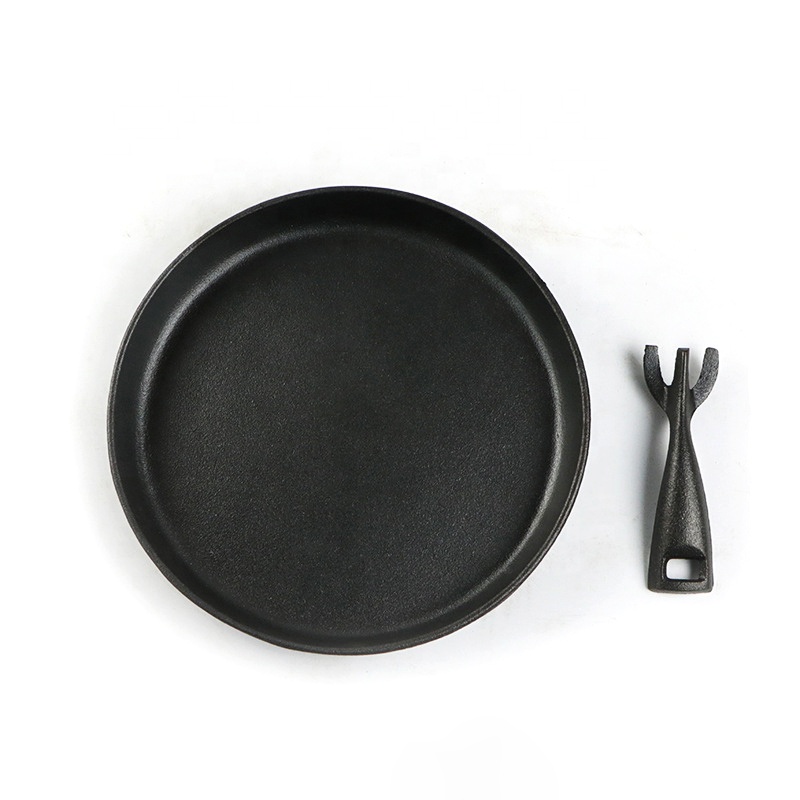
Effective Methods for Cleaning Your Cast Iron Frying Pan for Longevity and Performance
How to Clean a Cast Iron Frying Pan A Comprehensive Guide
Cast iron frying pans are beloved kitchen staples, known for their durability and excellent heat retention. However, cleaning them requires a bit of special care to maintain their non-stick surface and prevent rust. In this article, we will discuss effective techniques for cleaning a cast iron frying pan to ensure it lasts for generations.
Why Cast Iron?
Before delving into the cleaning process, it's essential to understand why cast iron cookware is so revered. Unlike non-stick pans, cast iron develops a natural non-stick surface over time, known as seasoning. This is a layer of polymerized oil that gives cast iron its unique cooking properties. Proper cleaning and maintenance are essential to preserve this layer and prevent damage.
Cleaning Basics
1. Avoid Soap and Dishwashers One of the key rules in cleaning a cast iron frying pan is to avoid soap. Conventional dish soaps can strip away the seasoning, making your pan more prone to rust and food sticking. Similarly, never place your cast iron frying pan in the dishwasher; the prolonged exposure to water and detergent can be detrimental.
2. Use Hot Water After cooking, while the pan is still warm (but not too hot to handle), add some hot water to it. This will help loosen any food particles stuck to the surface. You can use a wooden spoon or spatula to gently scrape away any residue.
3. For Stubborn Residue If food is particularly stubborn, you can use a non-metal brush or a scrub pad specifically designed for cast iron. Some people also recommend using coarse salt as an abrasive cleaner. Simply pour a bit of kosher or sea salt into the pan along with some water and scrub with a rag or sponge. The salt will help lift off any stuck-on particles without damaging the seasoning.
Dealing with Rust
If your cast iron frying pan develops rust, don’t despair. It’s relatively easy to restore. Here’s how to proceed
cast iron frying pan cleaning

1. Remove Rust Use steel wool or a rust eraser to scrub away the rust. Be sure to remove all rust spots until the metal is smooth again.
2. Wash and Dry After you've scrubbed out the rust, wash the pan with hot water and a small amount of soap to remove any remnants of rust. Rinse thoroughly and dry immediately with a towel or by placing it on low heat on the stove to evaporate any remaining moisture.
3. Re-season the Pan After rust removal, you'll need to re-season your pan to restore its non-stick surface. Apply a thin layer of vegetable oil, grapeseed oil, or flaxseed oil to the entire surface, including the exterior and handle. Place the pan upside down in an oven preheated to 450°F (232°C) for about an hour. This process will create a fresh layer of seasoning.
Regular Maintenance
To keep your cast iron frying pan in optimum condition, regular maintenance is crucial
- Season After Each Use After cleaning, consider applying a thin layer of oil to your pan while it’s still warm. This not only helps maintain the seasoning but also protects it from moisture.
- Store Properly Store your cast iron cookware in a dry place. To prevent moisture buildup, place a paper towel inside the pan to absorb any humidity. If you stack your cast iron pans, place paper towels between them to avoid scratching the seasoned surface.
- Avoid Cooking Acidic Foods While it's possible to cook acidic foods like tomato sauce in a cast iron pan, doing so frequently can wear down the seasoning. Reserve these types of dishes for stainless steel cookware.
Conclusion
Caring for a cast iron frying pan doesn't have to be daunting. With proper cleaning techniques and maintenance practices, your pan can serve you faithfully for years to come. Embrace the charm of cast iron cookware, and you will enjoy the delicious meals it helps you create while enjoying the satisfaction of cooking with a timeless kitchen companion. Remember, a little care goes a long way, and your cast iron frying pan will reward you with fantastic meals for generations!
-
Season Cast Iron Perfectly with GPT-4 Turbo TipsNewsAug.01,2025
-
High Quality Cast Iron Cookware - Baixiang County Zhongda MachineryNewsAug.01,2025
-
Premium Cast Iron Pan: Durable & Perfect HeatNewsAug.01,2025
-
High Quality Kitchen Durable Black Round Cast Iron Cookware Pancake Crepe Pan-Baixiang County Zhongda Machinery Manufacturing Co., Ltd.NewsAug.01,2025
-
Cast Iron Cookware - Baixiang County Zhongda Machinery | Nonstick, Heat ResistanceNewsAug.01,2025
-
High Quality Kitchen Durable Black Round Cast Iron Cookware - Baixiang County Zhongda Machinery | Non-Stick, Heat Retention, DurableNewsJul.31,2025


